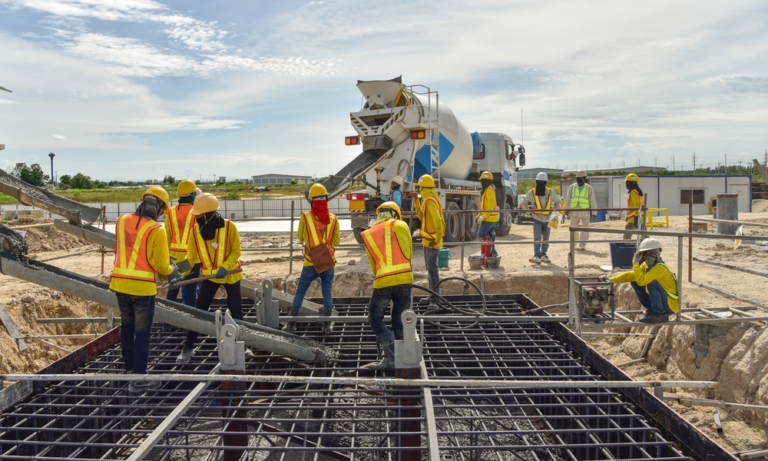Estimated reading time: 5 minutes
Signs You Need Concrete Repair and When to Act
As someone who works closely with concrete daily, I’ve learned that concrete, while tough as nails, still needs some TLC. If you’ve noticed a crack here or a pothole there, it might be time to consider repairs. Neglecting these issues could cost more than just money—it could cost you your peace of mind. In this guide, I’ll share clear signs your concrete needs repair and when you should act. Let’s keep your pavement sturdy, safe, and good-looking.
What You’ll Learn
- Surface-level issues that need attention.
- How to distinguish between minor and major cracks.
- Why spalling, chips, and discoloration matter.
- When depressions or potholes signal deeper problems.
- How to decide between repair and replacement.
1. Surface-Level Problems
Sometimes, concrete’s issues are skin-deep. Blistering, crazing, or discoloration are examples. While these may not compromise structural integrity, they can be an eyesore. For instance:
Blistering: This occurs when air gets trapped during pouring. Think of it as concrete’s version of acne—it’s annoying but manageable.
Crazing: Fine, superficial cracks that form a network pattern. They don’t mean the structure is failing, but they might make you cringe every time you see them.
Discoloration: Caused by poor mixes, weather, or wear. It’s like a concrete “bad hair day”—unpleasant to look at but fixable.
Solution: A surface overlay can often restore the concrete’s appearance without a full replacement.
2. Cracks: Minor vs. Major

Not all cracks are created equal. Some are like small paper cuts—minor annoyances. Others are gaping wounds that scream for help.
Non-Working Cracks: These aren’t growing or threatening the concrete’s stability. A simple, non-flexible crack sealer can patch them up quickly.
Working Cracks: Actively spreading cracks require more effort. They let water seep in, which can weaken the base and create bigger problems.
If you spot wide, deep fractures, it’s often a sign the concrete needs more than a patch job—it’s replacement time.
Pro Tip: Don’t play the “wait and see” game with cracks. Acting early can save you from a major headache (and wallet-ache).
3. Spalling, Chips, and Popouts
Ever noticed small chunks missing from your concrete? That’s spalling or popouts. While they might seem cosmetic, they can expose your concrete to water damage, leading to more serious problems.
Spalling: Usually caused by freeze-thaw cycles or chemical reactions.
Popouts: Small chunks “pop out,” leaving behind unsightly craters.
Solution: Spot patching or overlays can address these issues if caught early. Left unchecked, though, they might require deeper repairs.
4. Depressions and Potholes

If your concrete starts looking like a lunar surface, it’s time to act. Depressions and potholes usually signal issues with the underlying base.
Minor Issues: Small potholes or depressions might be repairable with spot fixes.
Major Issues: If the base has failed, contractors may need to stabilize it chemically or mechanically before replacing the slab.
Here’s the deal: a damaged base isn’t something you want to ignore. Think of it as a house built on sand—it’s only a matter of time before the whole structure suffers.
5. Repair or Replace?
How do you decide if your concrete needs a facelift or a full-on makeover? It boils down to severity and extent.
Repair: Great for surface-level issues, minor cracks, and small patches of spalling.
Replace: Necessary for widespread cracks, significant depressions, or severe base instability.
My Advice: When in doubt, consult a professional. A thorough inspection can determine the best course of action.
6. Why Timely Repairs Matter
Letting concrete problems linger is like ignoring a leaky roof—it doesn’t end well. Acting promptly can:
Enhance safety (no one likes tripping hazards).
Prolong the lifespan of your concrete.
Save you money by avoiding larger repairs or replacements.
7. Light Humor for a Heavy Topic
Concrete might not be the most exciting topic, but it’s the backbone of your property—literally. Think of it this way: if concrete had feelings, it’d beg for a little attention now and then. After all, it’s been holding up your driveway, patio, or walkway without complaint for years.
8. Preventing Future Damage
Here’s how you can keep your concrete in good shape:
Seal it: A good sealant can protect against water damage and freeze-thaw cycles.
Clean regularly: Dirt and grime can wear down the surface over time.
Fix small problems fast: Don’t wait for a minor issue to become a major one.
9. Closing Thoughts
Concrete is tough, but even the toughest materials need care. Spotting and addressing issues early ensures your pavement stays functional, safe, and attractive. If you’re unsure whether you need a repair or replacement, don’t hesitate to get a professional opinion.
Your concrete works hard—let’s give it the support it needs to last for years to come.



